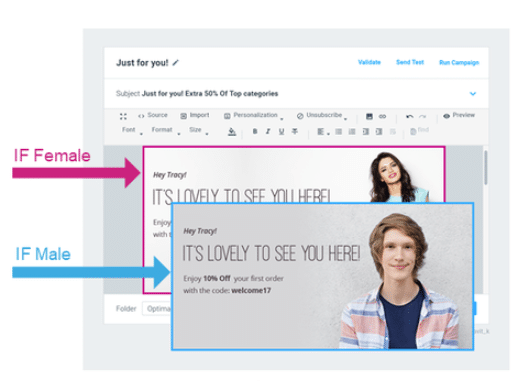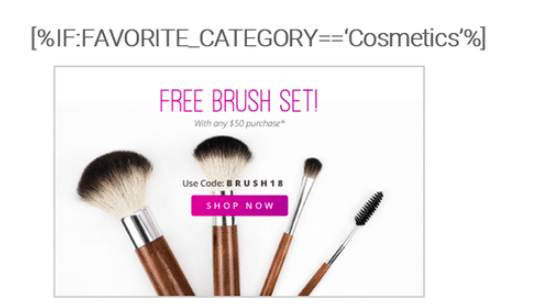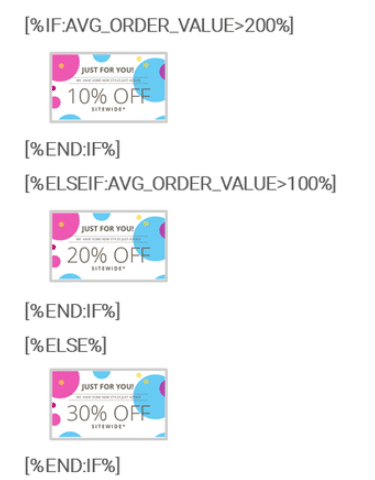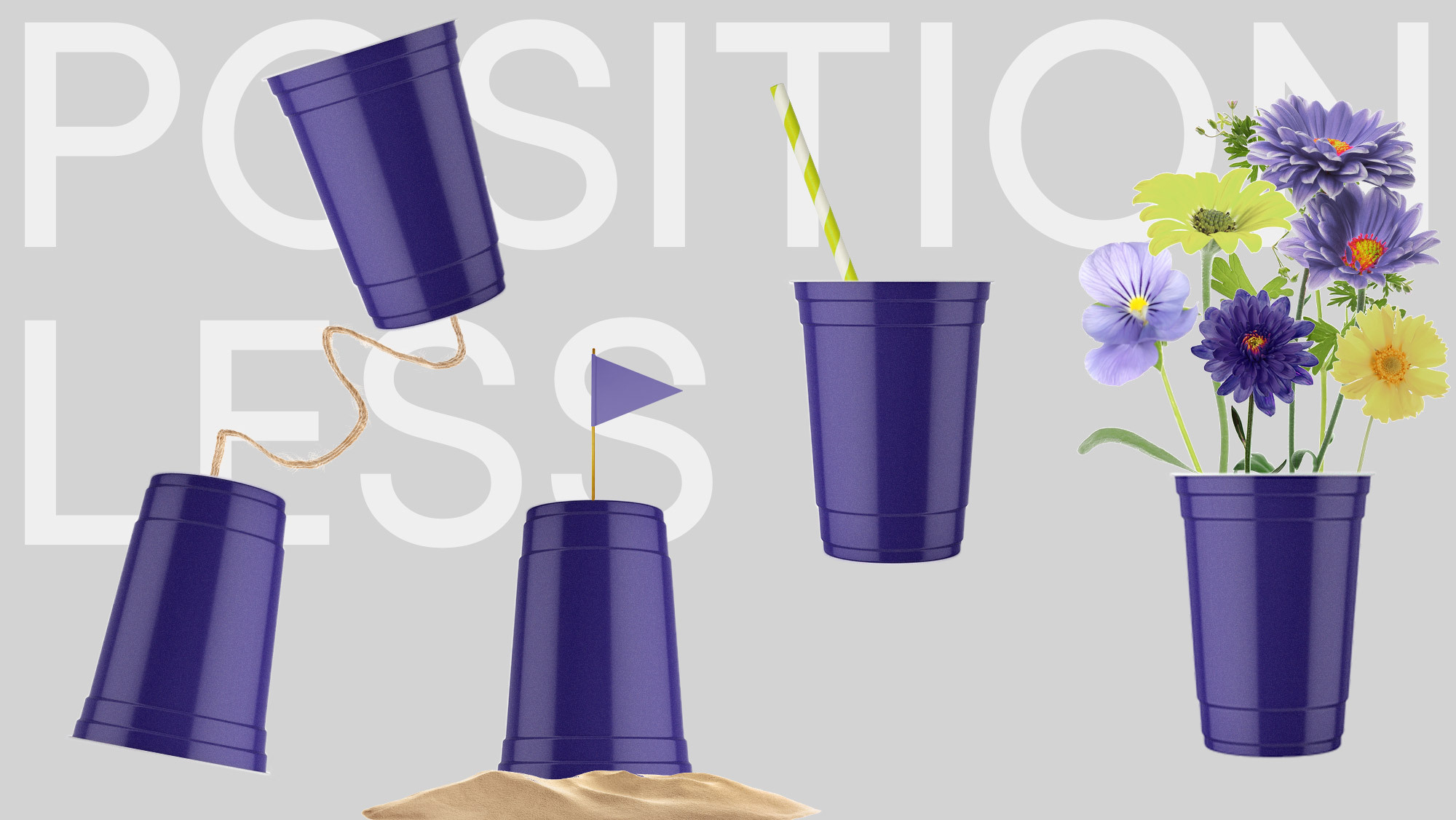
AI and the Retail Marketer’s Future
How AI transforms strategy and processes, driving the adoption of Positionless Marketing
Exclusive Forrester Report on AI in Marketing

With the ever-increasing levels of personalization available through predictive segmentation, persona-based campaigns, and dynamic customer journeys, one concern invariably shows up for every marketer: “I don’t have the creative bandwidth to match the possibilities of personalization”. Right off the bat, you might be right. Moving from a 'Batch and Blast' method of targeting customers with only one template each day, to a more personalized approach which requires multiple templates dedicated to various customer behavioral patterns and activity, is indeed frightening.
Sometimes we need to take a step back and understand that it’s worth overcoming a small hurdle so that long-term, we use fewer resources. Once we create initial journeys customers migrate to and from according to their individual behavior, resources once allocated to creating new campaigns each day can now drive strategy and building sophisticated and even more personalized campaigns.
In this blog post, we will offer a few segmentation and content management methods that will make personalization easier.
One of the benefits of a well-segmented customer base is discovering multiple segments and personas that are mutually exclusive. This is a wonderful opportunity for marketers to re-purpose creative by merely tweaking the wording or the offer. Bonus: it works for all channels.
A very basic personalization phase is segmenting your customers by where they are in their journey with your brand. Are they registered only? Have they made a purchase? Are they considered churned? If this initial lifecycle segmentation is done correctly, there shouldn’t be overlap between the stages.
One example of such segmentation is for Conversion vs. Reactivation campaigns. The first campaign targets registered customers who have never made a purchase, the second targets churned or lapsed customers (i.e. customers who have greatly surpassed their expected purchase cycles). Since these two segments require a relatively strong incentive to get them to make their first purchase/return to make additional purchases, it’s possible to use the same template for both groups. Tweak the unique piece by a simple change in text. “Join the Family” for registered only vs. “We miss you” for churned customers.
Because the two segments are on opposite sides of the lifecycle spectrum, the time it takes a registered only customer to make their first purchase and be considered churn is long enough that they won’t necessarily remember what they received before they purchased.
Marketers have been using email “dynamic tags” and “conditional formatting” to easily cater to the different sub-sections of their customer base inside a specific segment, without having to create additional segments.
Using dynamic tags to populate a single HTML template with relevant information such as “First Name”, “Location”, “Preferred Category” or “Favorite Brand” is extremely useful to customize a fully personalized letter to each customer. Used to their maximum potential, Dynamic Tags can save most of us a lot of time and effort by only developing one template.
Conditional Formatting is a big step up from Dynamic Tags: where Dynamic Tags only change parts of the email wording (first name, city etc.), Conditional Formatting allows the marketer to personalize the full content of a single template. It is done by showing each customer different images, offers, products or links based on a customer’s unique characteristic such as their gender, their recent purchases, their LTV or risk of Churn.

Gender-based conditional formatting shows the most relevant content and offers to each customer based on gender. This simple personalization is easily implemented once and for all inside a template which then dynamically adjusts to the recipient. Think of it as “Two Creatives for One”.
Category-based conditional formatting can be based on “favorite category”, “recently purchased category”, “recently browsed category”, or, if you have a killer recommendation engine, “recommended category”. We are talking about a single template morphing into multiples and displaying to each customer the most relevant content.

The 'sexiest' use of conditional formatting is tiering the level of offer based on customers’ future value. This requires an accurate, transparent and reliable predictive model. The goal is to provide different treatments based on customers’ future value to the brand and avoid revenue cannibalization through unnecessary discounting. In the example below, we have defined that if the customer has an average order value of over $200, they would receive 10% off sitewide, but if the customer has an order value of between $100-$200, they receive 20% off sitewide and so on. This ensures that as a company, the total discounted amount does not exceed our budget.
Fun tip: the same type of “offer tiering” can be used for defining Risk of Churn customers OR Risk of being One Timers. If a customer is just a potential risk of churn or potential one-timer, we will send them a softer incentive, but as they climb up into High Risk of Churn, we’ll send a stronger incentive.

Instead of generating entirely new and often static creative pieces, marketers have been turning to the concept of Atomic Content, which is defined by Gartner as “Combining dynamically, and often in real time, different content “atoms” to create a more relevant overall marketing asset and experience that specifically meets the needs of the recipient based on where they are on the customer journey”. The dynamic “atoms” range from geolocation-based images, videos, offers, call to actions, inventory-adjusted recommendations, dynamic mirroring of the website and more. They can be combined in a single email and automatically adjust upon email open. There is significant time-saving in the fact that these atoms need only be created once and then dynamically updated based on the recipient and the opening time and place.
Optimove’s recent acquisition of Dynamic Mail allows linking this functionality directly to its modeling and execution capabilities. Atomic content is an incredibly time-efficient way to increase engagement by creating a curated personalized experience for each customer.
This is a concept of setting up automatically recurring campaigns based on behavioral criteria rather than specific customers. For example, anyone who placed their first order yesterday, anyone who is at risk of churn, anyone who has churned, but has been identified as browsing through the brand website. Based on a customer’s behavior, they will migrate between the different campaigns automatically. Hence only viewing the relevant template that matches their activity.
For mainly unchanging groups of customers, such as Churned customers, the idea of recurring automated campaigns comes in to play. To mitigate the number of campaigns and templates that need to be sent, a simple approach is scheduling 4 different offers to go out every 2 weeks. Thus, each promotion will recur every 2 months.
In moving away from a “one to many” approach towards a “one to one” marketing approach, a lot of marketers fear the side effect of content scaling. The misalignment results from thinking that each new personalized campaign will require a new piece of content, when in fact, a “Batch and Blast” approach is the least content-effective approach as it requires new creatives for every send.
Increased personalization with true automation, however, allows for multiple uses of the same creative piece via a range of methodologies as described above. It first requires the marketer to have visibility into the different opportunities for personalized segments. It also means marketers should part with their fear of letting a customer see a piece of creative more than once: repurposing content is one of the most efficient ways to optimize creative teams’ efforts and cater to different customer personas. Smart repurposing, accurate and bespoke segmentation, use of conditional rules and atomic content are here to accelerate the speed of personalization, not hinder it, and certainly not to overload your design team.
Exclusive Forrester Report on AI in Marketing
In this proprietary Forrester report, learn how global marketers use AI and Positionless Marketing to streamline workflows and increase relevance.


Writers in the Optimove Team include marketing, R&D, product, data science, customer success, and technology experts who were instrumental in the creation of Positionless Marketing, a movement enabling marketers to do anything, and be everything.
Optimove’s leaders’ diverse expertise and real-world experience provide expert commentary and insight into proven and leading-edge marketing practices and trends.


